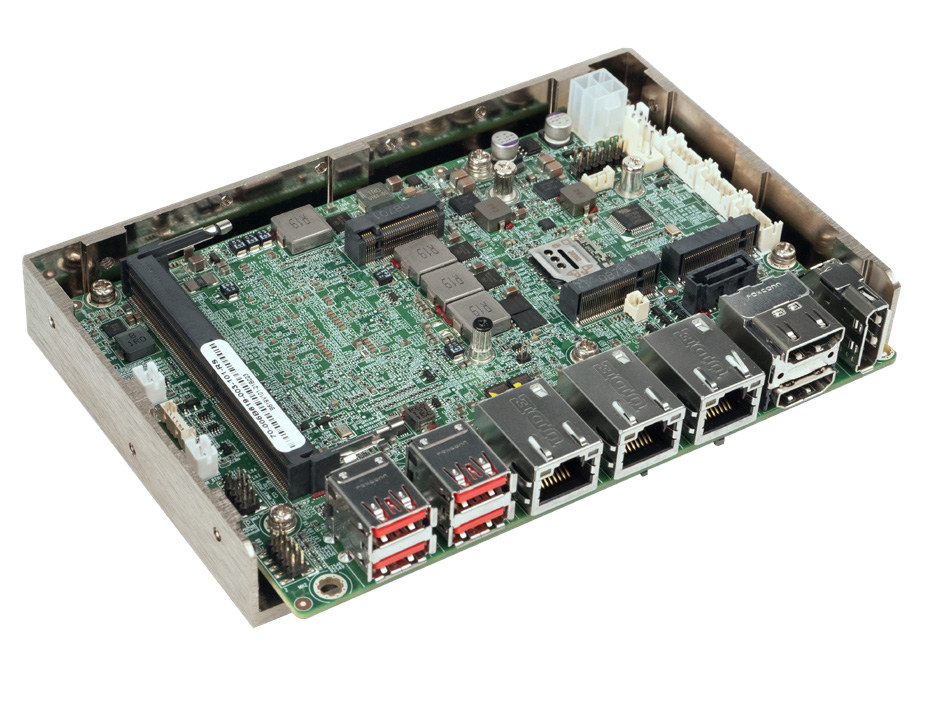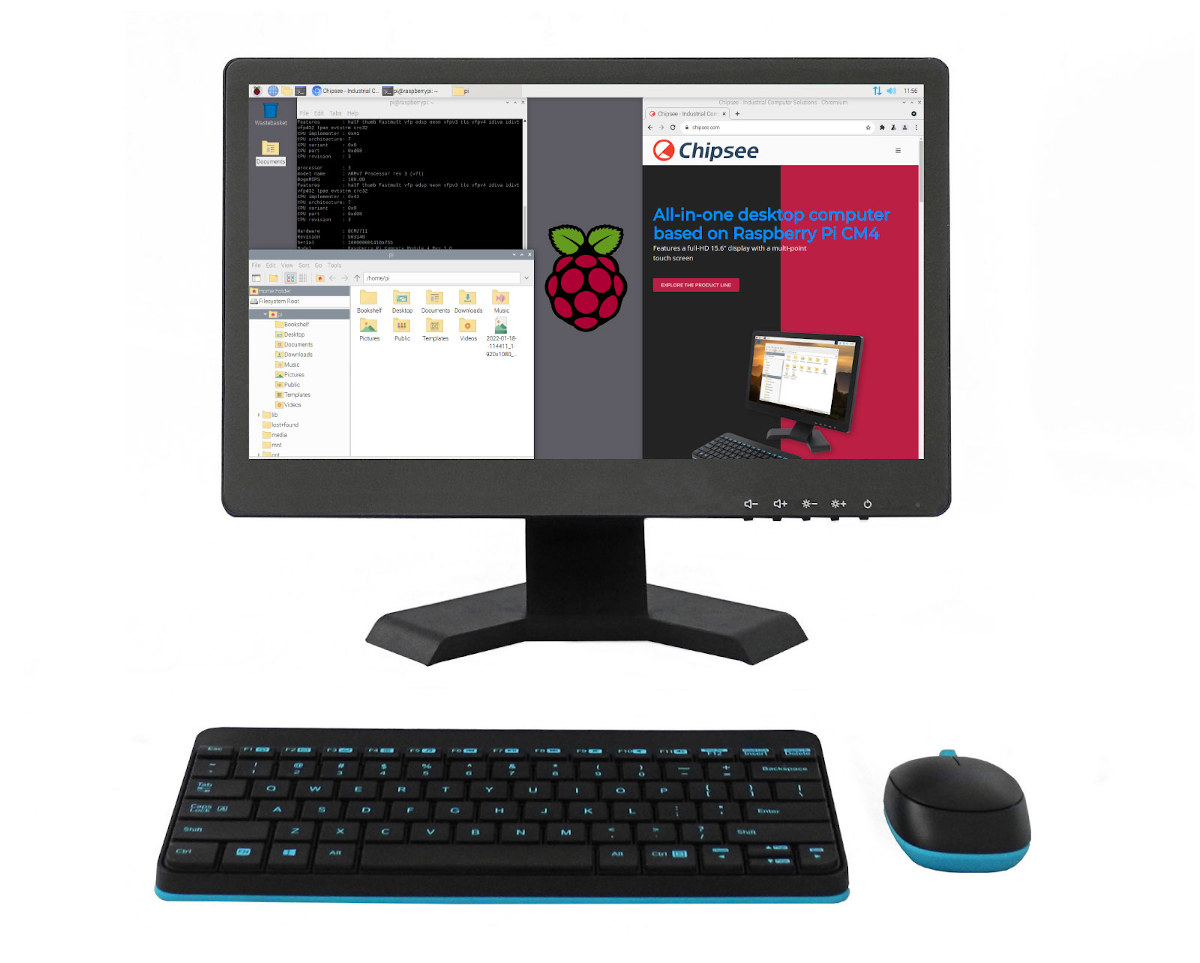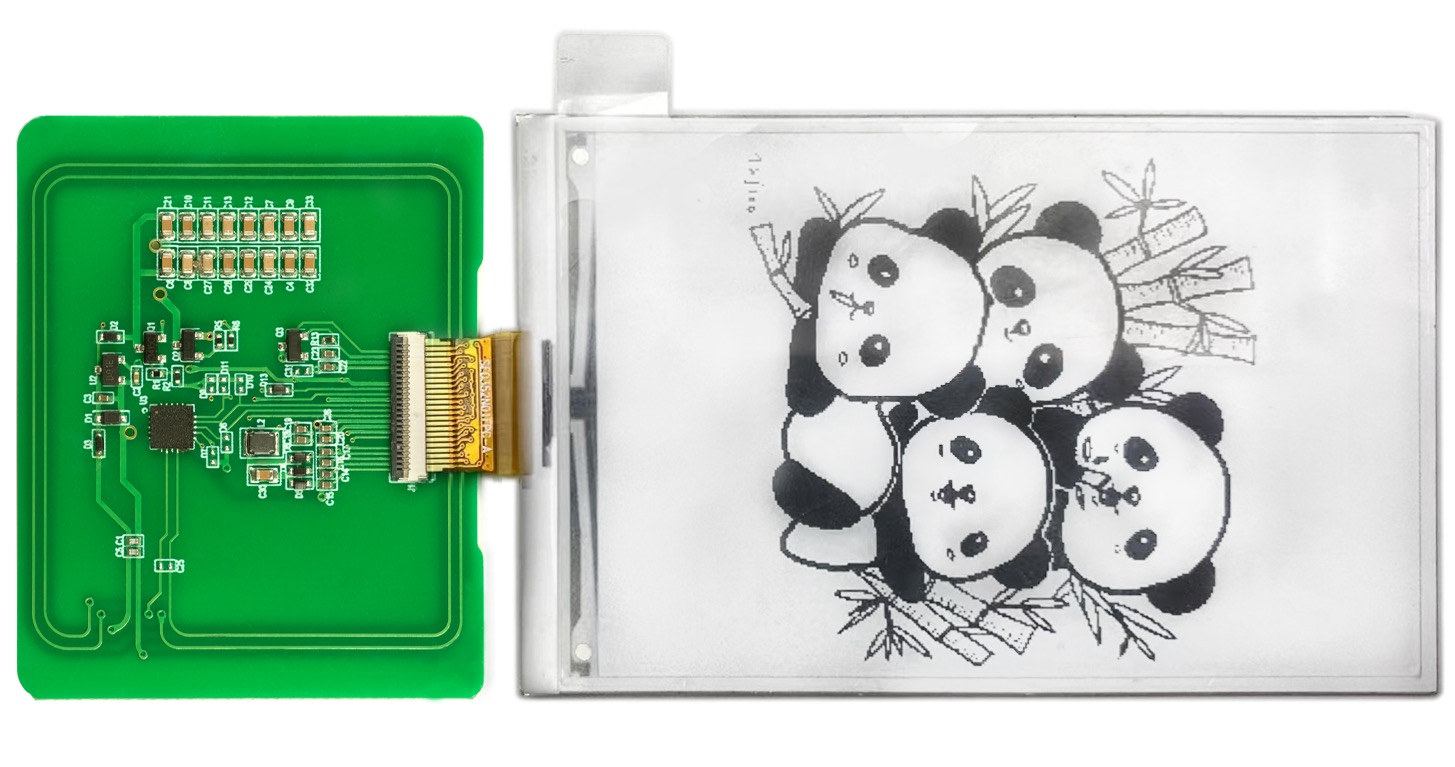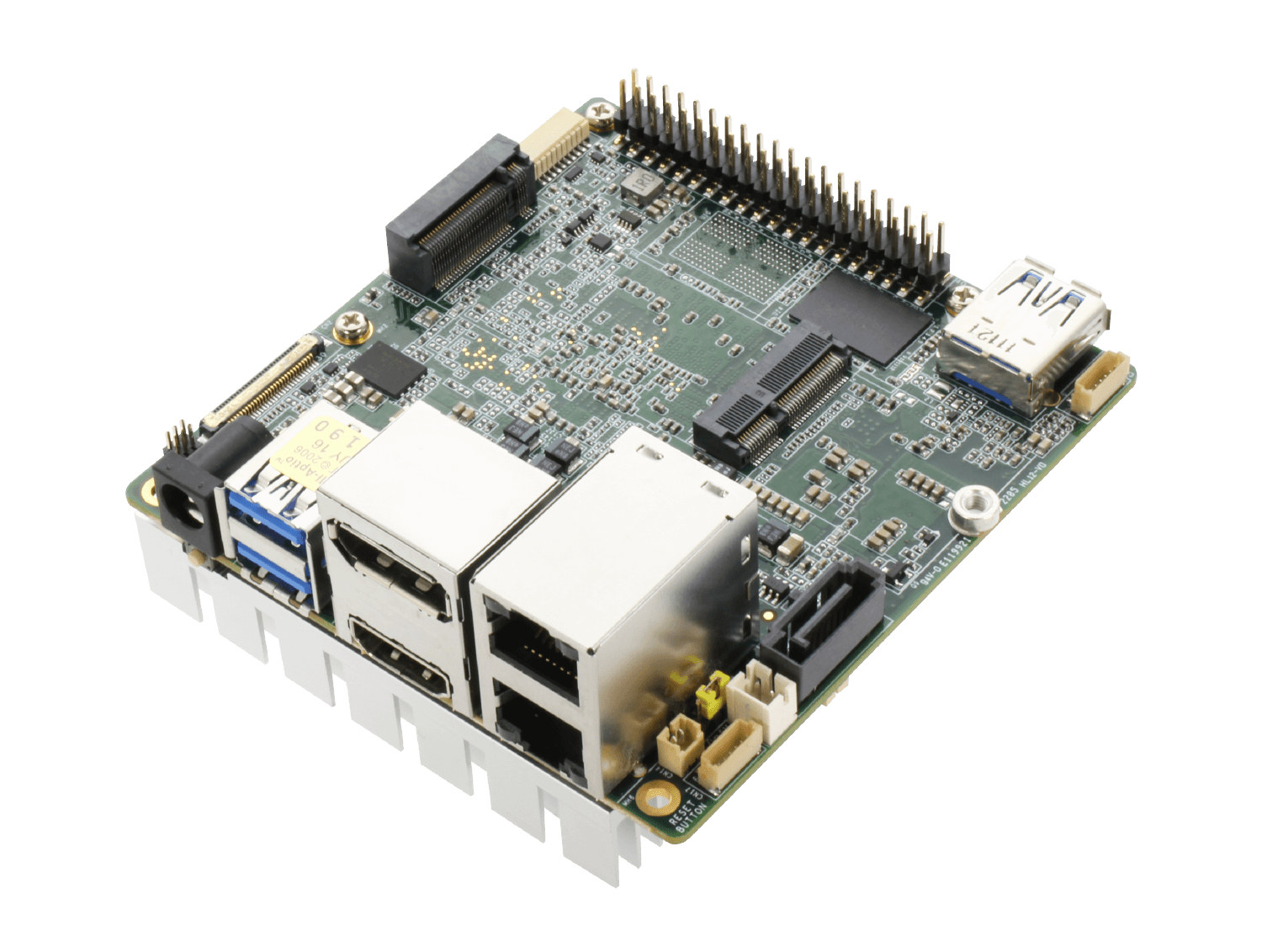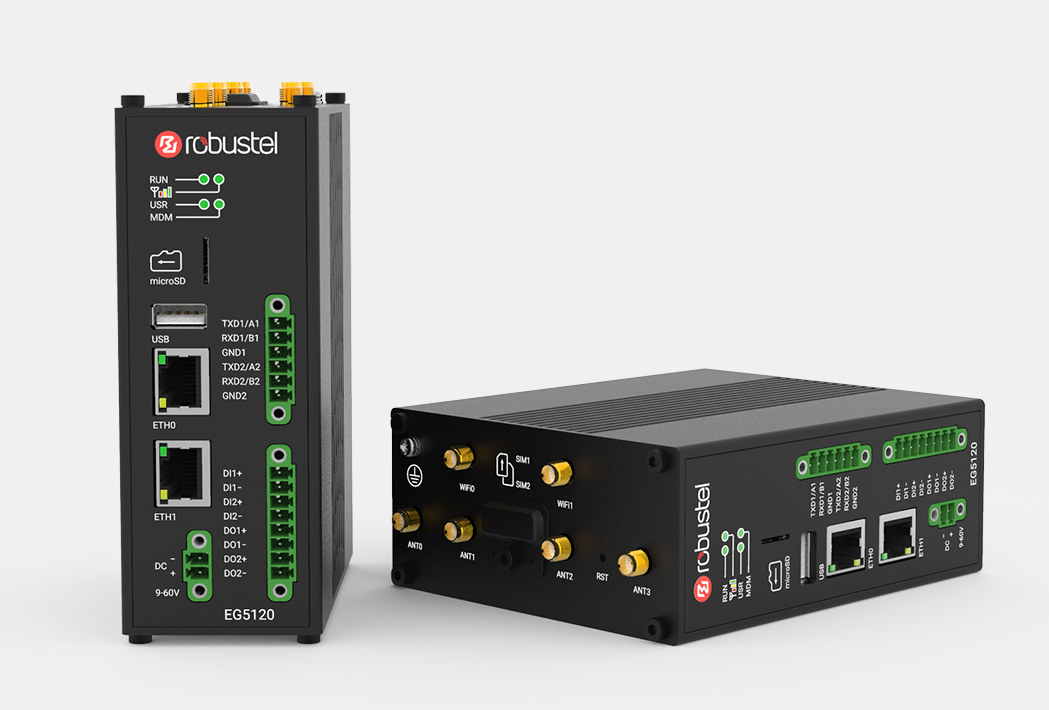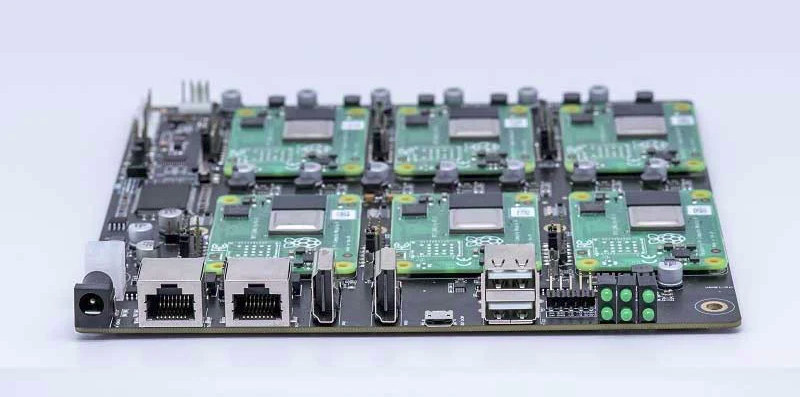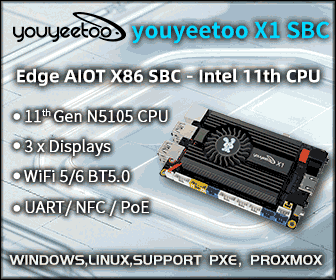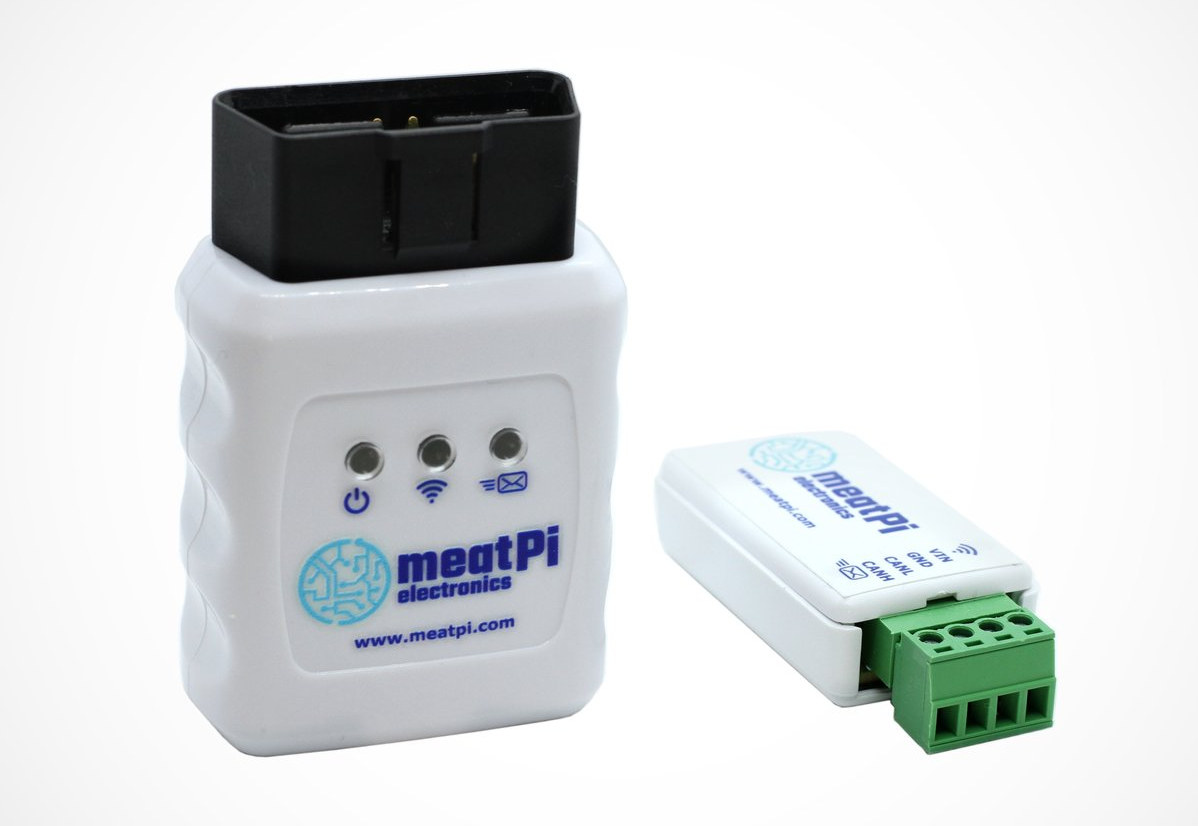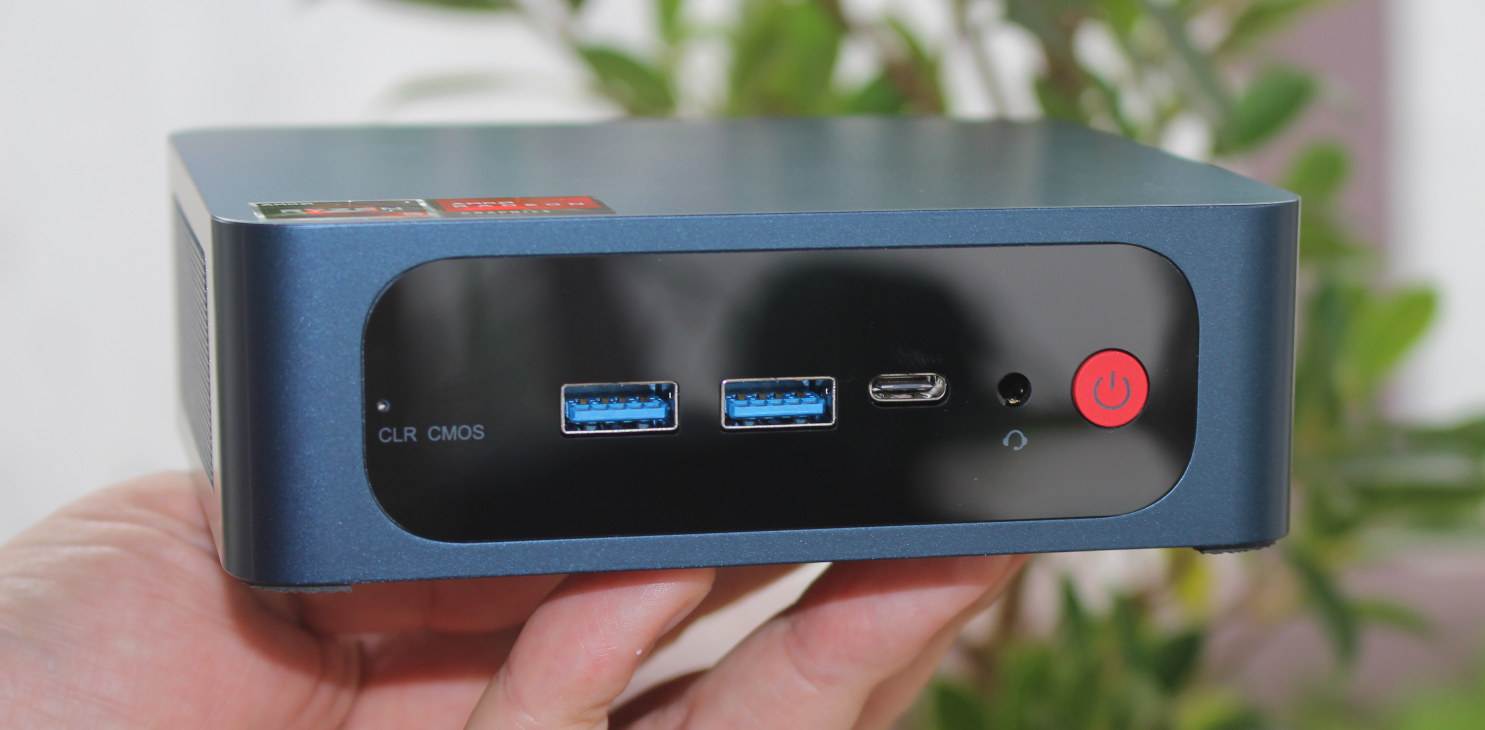IEI’s WAFER-TGL-U is a 3.5-inch SBC based on a choice of Intel Tiger Lake UP3 processors with up to 32GB RAM, SATA storage, three 2.5 Gbps Ethernet ports, four display interfaces including HDMI, DisplayPort, and the company’s custom iDPM 3040 slot for eDP/LVDS/VGA, as well as four USB 3.2 ports. The board also comes with M.2 sockets to add 4G LTE or 5G cellular connectivity, a few RS232/RS422/RS485 ports, and IEI says it is ideal for space-constrained applications such as AGV (Automated Guided Vehicle), AMR (Autonomous Mobile Robot), and small cabinets in factories. WAFER-TGL-U specifications: Tiger Lake UP3 SoC (One or the other) Intel Core i7-1185G7E quad-core processor up to 4.4GHz 12MB cache, TDP=28/15/12W Intel Core i5-1145G7E quad-core processor up to 4.1GHz, 8MB Cache, TDP=28/15/12W Intel Core i3-1115G4E dual-core processor up to 3.9GHz, dual-core, 6M Cache, TDP=28/15/12W Intel Celeron 6305E (up to 1.8GHz, dual-core, 4M Cache, TDP=15W) System Memory – […]
Chipsee AIO-CM4-156 – A 15.6-inch industrial All-in-One computer with Raspberry Pi CM4
Chipsee AIO-CM4-156 is an industrial All-in-One computer powered by a Raspberry Pi CM4 module and equipped with a 15.6-inch capacitive touchscreen display with 1920×1080 resolution. The new panel PC builds upon the earlier AIO-CM4-101 model with a 10.1-inch touchscreen display and besides the larger and higher resolution 15.6-inch Full HD display, it also adds support for an optional 250GB Sandisk NVMe SSD and a 2mm protective “armoplated” Glass. Since as far as I know, “armoplated” is not a word, they may refer to armored/toughened glass instead. AIO-CM4-156 specifications: SoM – Raspberry Pi CM4 with Broadcom BCM2711 quad-core Cortex-A72 processor at 1.5 GHz, up to 8GB RAM, up to 32GB eMMC flash Storage MicroSD card slot for boot (only used with CM4 Lite) M.2 NVMe socket for an optional 250GB SSD drive Display – 15.6-inch IPS LCD with 1920×1080 resolution, optional 10-point capacitive touchscreen, 250 cd/m2 brightness, 2mm protective armored glass […]
HiPo batteryless NFC-powered 3.52-inch e-Paper display also comes with an SPI interface (Crowdfunding)
HiPo is a 3.52-inch black and white e-Paper Display that can be updated through NFC without the need for external power and offers an alternative to the 4.2-inch and 7.5-inch NFC-powered e-Paper displays from Wareshare that also operate without battery only using the data and power from NFC to update the image. Alternatively, Guangdong SID Technology’s HiPo display can also be connected to an SPI adapter board allowing the users to connect it to an STM32 board provided by the company, but it could also be used with Arduino boards, ESP8266 & ESP32 hardware platforms, Raspberry Pi SBCs and MCU boards, or any platform with an SPI interface. HiPo specifications: Controller – Ultrachip UC8251 all-in-one driver IC with timing controller for E-tag applications Display 3.52-inch B&W e-Paper display with 360 x 240 resolution (model name: SE0352N01-MNG-A0) 3 seconds refresh time On-chip display RAM White reflectance above 30% Contrast ratio above […]
UP Squared 2 is a compact Elkhart Lake SBC with Celeron N6210 or Pentium J6426 processor
UP Squared 2 is a compact single board computer powered by either an Intel Celeron N6210 or Pentium J6426 “Elkhart Lake” processor with up to 16GB RAM, 64GB eMMC flash, 4K capable HDMI and DisplayPort video outputs, two Gigabit Ethernet ports, and more. Slightly smaller than two business cards, the UP Squared 2 is an upgrade of the UP Squared SBC introduced in 2016 with Intel Celeron N3350 or Pentium N4200 “Apollo Lake” processor. The new board offers virtually the same features, except the two HDMI ports, have been replaced by one HDMI port, and one DisplayPort connector, the mini PCIe slot is gone in favor of an M.2 NVMe socket, the Altera FPGA has been removed, and the new system provides overall better specifications in terms of CPU/GPU performance. UP Squared V2 specifications: Elkhart Lake SoC (one or the other) Intel Celeron N6210 dual-core processor up to 2.6 GHz […]
Robustel industrial IoT gateways run Debian-based OS, offer 5G, 4G LTE, LoRaWAN connectivity
Robustel has launched three Arm-based industrial IoT gateways namely the EG5100, EG5120, and LG5100 that offer 5G, 4G LTE, and/or LoRaWAN connectivity, and runs Debian 11-based RobustOS Pro Linux operating systems The edge gateways also feature two Ethernet ports, two RS232/RS485 ports for connection to industrial devices, digital inputs and outputs for simple monitoring and control, and support a wide 9 to 60V DC power input through a 2-pin terminal block. Robustel LG5100, EG5100, and EG5120 specifications: SoC/memory/storage LG5100 and EG5100 Unnamed quad-core Cortex-A7 processor @ 792 MHz (possibly NXP i.MX 7ULP) 512MB DDR3 8GB eMMC flash EG5120 Unnamed quad-core Cortex-A53 processor @ 1.6 GHz with 2.3 TOPS NPU (very likely NXP i.MX 8M Plus) 2GB DDR4 16GB eMMC flash, microSD card socket Connectivity LG5100 2x 10/100 Mbps Ethernet ports with support for 802.3af PD feature on eth0 LoRaWAN connectivity with 1x SMA antenna connector, support for EU868, AU915, CN470 […]
DeskPi Super6C mini-ITX board takes up to 6x Raspberry Pi CM4 modules
You may remember the Turing Pi 2 mini-ITX cluster board that supports up to four Raspberry Pi CM4 modules. It now has some competition with the DeskPi Super6C board, still based on the mini-ITX form factor, and taking up to six Raspberry Pi CM4 modules. The Super6C offers a much slimmer design since the modules are inserted horizontally instead of vertically, plus each module comes with its own M.2 NVMe SSD socket besides a microSD card slot. The board also features two Gigabit Ethernet ports and two HDMI outputs, as well as four USB 2.0 ports. DeskPi Super6C specifications: SoM – 6x sockets for up Raspberry Pi Compute Module 4 Storage 6x M.2 PCIe Gen2 x1 2280 sockets, one per CM4 module 6x MicroSD card slots, one per CM4 module Video Output – 1x HDMI 2.0 output, 1x HDMI 1.4a output, both attached to the first Raspberry Pi CM4 module […]
WiCAN ESP32-C3 CAN Bus platform is available in USB-CAN and OBD-II form factors (Crowdfunding)
WiCAN is an ESP32-C3 CAN bus adapter that works over USB, Wi-Fi, and Bluetooth LE, and designed for car hacking and general CAN bus development. The device is available in USB-CAN and OBD-II form factors and comes with firmware that works with RealDash to create nice-looking dashboards with the data. RealDash can be installed on Android, iOS, and Windows 10 operating systems. WiCAN specifications: Wireless module – ESP32-C3-MINI-1 with ESP32-C3 RISC-V microcontroller with 2.4GHz WiFI 4 and Bluetooth 5.0 connectivity, 4 MB flash, PCB antenna CAN 2.0 A/B interface up to 1 Mbps Host interface WiCAN-OBD – OBD-II connector WiCAN-USB – Mini USB port for USB-to-UART up to 6 Mbps Power Supply WiCAN-ODB – 7.5V to 16V (Vbat) WiCAN-USB – 7.5V to 36V via screw-terminal connector Power Consumption – <= 1 mA in battery-saving mode The CAN Bus adapter also supports firmware updates over WiFi, and can be used either […]
Trigkey Speed S3 mini PC review – Part 1: Unboxing and teardown
Trigkey Speed S3 is a compact mini PC powered by AMD Ryzen 5 3550H quad-core/eight-thread processor with 16GB DDR4 and a 500GB M.2 SSD with Windows 11 Pro operating systems, as well as two HDMI ports. Trigkey sent CNX Software a sample of the Speed S3 mini PC for review. In this post, we’ll check out the specifications of the device, before doing an unboxing and teardown of the device, and testing Windows 11 and Ubuntu in subsequent parts of the review. Trigkey Speed S3 specifications SoC – AMD Ryzen 5 3550H quad-core/eight-thread processor @ 2.1 / 3.7Ghz (Turbo) with Radeon Vega 8 Graphics @ 1200 MHz; TDP: 12-35W System Memory – 16 GB (2x 8GB) DDR4-3200MHz via two SO-DIMM sockets (upgradeable up to 64 GB) Storage 500GB M.2 SSD 2.5-inch SATA HDD bay (up to 7mm thick) Video Output – 2x HDMI ports Audio – 3.5mm audio jack with […]


